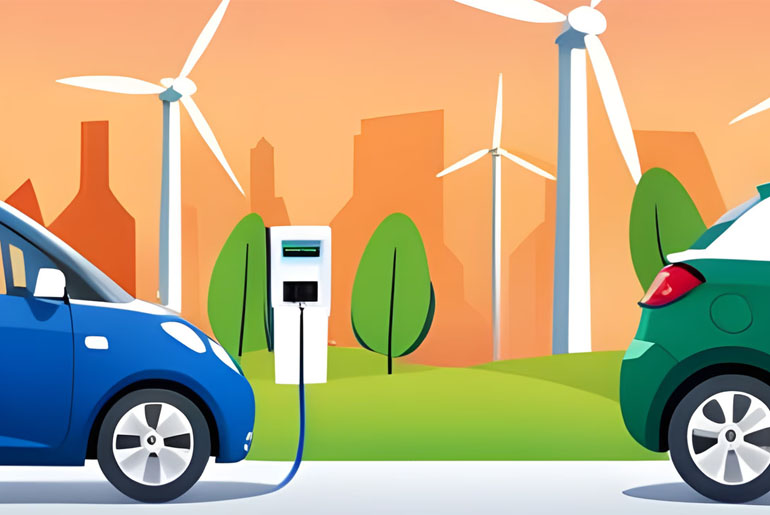The rapid advancement of electric vehicles (EVs) is revolutionizing not only the automotive industry but also the energy sector. One of the most promising technologies emerging from this intersection is bi-directional charging, which allows EVs to both draw power from the grid and return energy to it. This capability, known as Vehicle-to-Grid (V2G) technology, has the potential to transform EVs into dynamic energy storage solutions, enhancing the stability and efficiency of power grids. In this article, we will explore the concept of bi-directional charging, its benefits, challenges, and future prospects.
Understanding Bi-Directional Charging
Bi-directional charging enables the flow of electricity in two directions: from the grid to the vehicle (G2V) and from the vehicle to the grid (V2G). This is made possible through advanced power electronics and communication systems that manage the flow of energy and ensure the seamless integration of EVs with the grid.
In a bi-directional charging setup, an EV can act as a mobile energy storage unit. When there is excess energy in the grid, such as during periods of high renewable energy generation, EVs can store this surplus energy. Conversely, during peak demand periods or grid shortages, EVs can discharge stored energy back into the grid, helping to balance supply and demand.
Benefits of Bi-Directional Charging
- Grid Stability and Reliability: Bi-directional charging can enhance grid stability by providing a flexible and responsive energy storage solution. During peak demand periods, EVs can discharge energy, reducing the strain on the grid and preventing blackouts. Similarly, they can absorb excess energy during low demand periods, helping to balance the grid.
- Renewable Energy Integration: Renewable energy sources like solar and wind are intermittent, producing energy only when conditions are favorable. Bi-directional charging allows EVs to store excess renewable energy when it is available and release it when production is low, facilitating higher integration of renewables into the grid.
- Cost Savings for Consumers: EV owners can benefit financially from bi-directional charging by selling excess energy back to the grid during peak demand periods when electricity prices are high. Additionally, they can charge their vehicles during off-peak hours when electricity rates are lower, optimizing their energy costs.
- Emergency Backup Power: In the event of a power outage, EVs equipped with bi-directional charging can serve as backup power sources for homes and businesses. This can be particularly valuable in areas prone to natural disasters or grid instability.
- Reduced Infrastructure Costs: By leveraging the existing fleet of EVs as distributed energy storage units, utilities can reduce the need for additional investments in stationary energy storage infrastructure. This can lead to cost savings and more efficient use of resources.
Challenges and Considerations
- Technology and Infrastructure: Implementing bi-directional charging requires significant advancements in charging infrastructure and vehicle technology. Chargers must be capable of handling bi-directional energy flow, and vehicles need to be equipped with the necessary hardware and software to manage this process.
- Battery Degradation: Frequent charging and discharging cycles can accelerate battery degradation, reducing the lifespan of EV batteries. Ongoing research is focused on developing battery technologies and management systems that can mitigate this issue and extend battery life.
- Regulatory and Policy Barriers: The widespread adoption of bi-directional charging requires supportive regulatory frameworks and policies. Governments and regulatory bodies need to establish standards for bi-directional charging systems, address issues related to grid integration, and create incentives for consumers and utilities to adopt V2G technology.
- Consumer Awareness and Acceptance: For bi-directional charging to be successful, consumers need to be aware of its benefits and be willing to participate in V2G programs. This requires effective communication and education efforts by automakers, utilities, and policymakers.
- Data Security and Privacy: Bi-directional charging systems involve the exchange of data between vehicles, chargers, and the grid. Ensuring the security and privacy of this data is crucial to prevent cyber threats and protect consumer information.
Future Prospects
The future of bi-directional charging looks promising, with several pilot projects and commercial deployments already underway around the world. Automakers, utilities, and technology companies are collaborating to develop and refine V2G systems, making them more efficient, cost-effective, and user-friendly.
- Advanced Battery Technologies: Continued advancements in battery technologies, such as solid-state batteries and enhanced battery management systems, will improve the performance and longevity of EV batteries, making bi-directional charging more viable.
- Smart Grid Integration: The integration of bi-directional charging with smart grid technologies will enable more sophisticated energy management, allowing utilities to dynamically balance supply and demand and optimize the use of renewable energy sources.
- Standardization and Interoperability: Industry standards for bi-directional charging systems will ensure compatibility between different vehicles, chargers, and grid systems, facilitating broader adoption and seamless integration.
- Business Models and Incentives: Innovative business models and incentives will encourage consumers and businesses to adopt bi-directional charging. This could include time-of-use pricing, demand response programs, and financial rewards for participating in V2G initiatives.
- Global Adoption: As the benefits of bi-directional charging become more widely recognized, we can expect to see increased adoption globally. Countries with ambitious renewable energy goals and strong EV markets, such as Norway, Japan, and the Netherlands, are likely to lead the way in deploying V2G technology.
Conclusion
Bi-directional charging represents a transformative development in the evolution of electric vehicles and the energy sector. By enabling EVs to function as mobile energy storage units, V2G technology can enhance grid stability, support renewable energy integration, and provide financial benefits to consumers. While challenges remain, ongoing advancements in technology, supportive regulatory frameworks, and increased consumer awareness are paving the way for the widespread adoption of bi-directional charging. As we move towards a more sustainable and resilient energy future, the integration of bi-directional charging will play a crucial role in maximizing the potential of electric vehicles and optimizing our energy systems.

